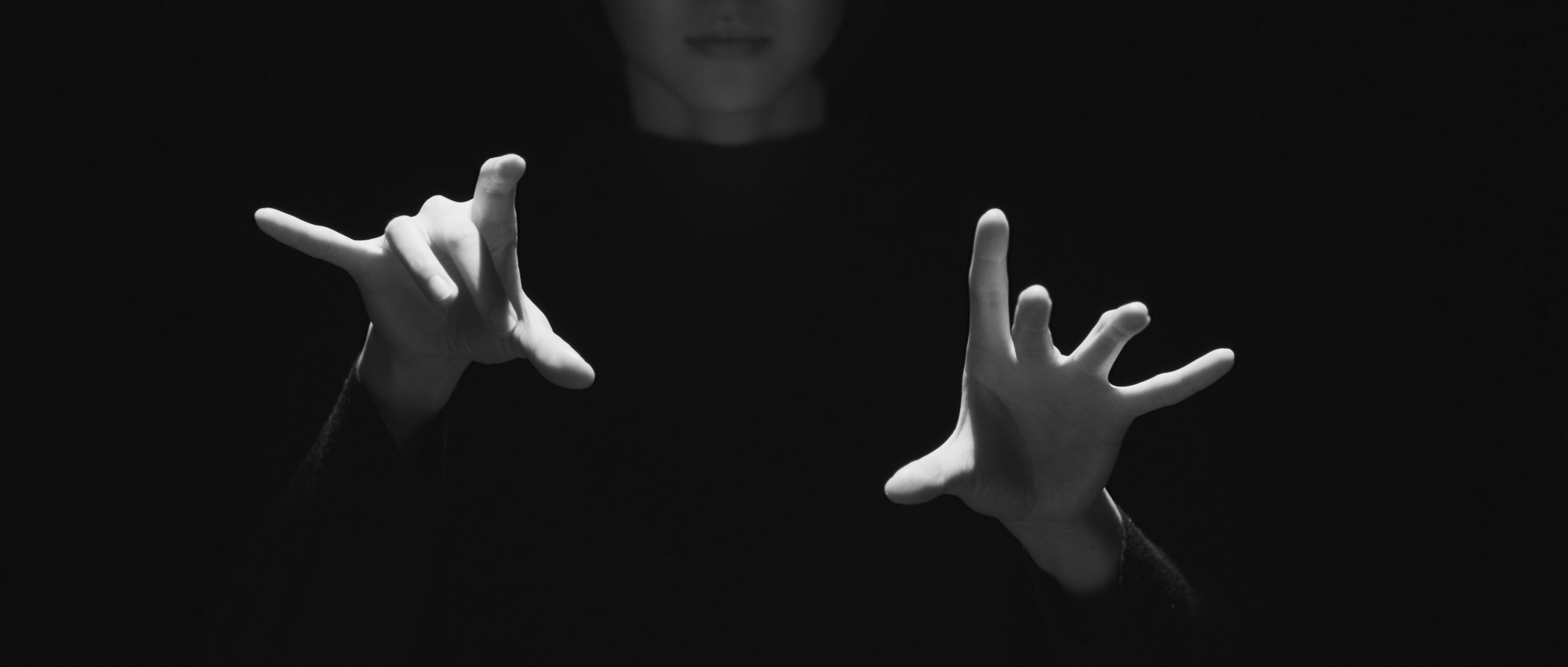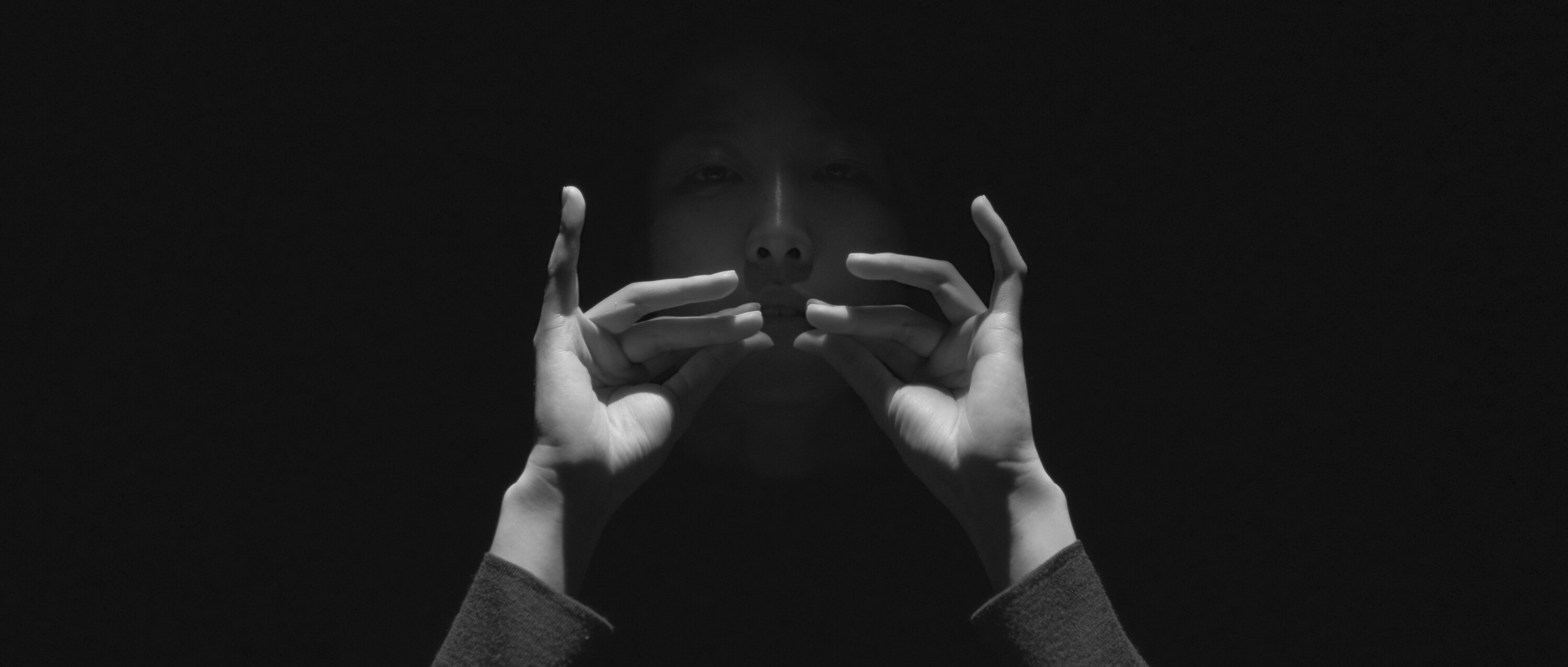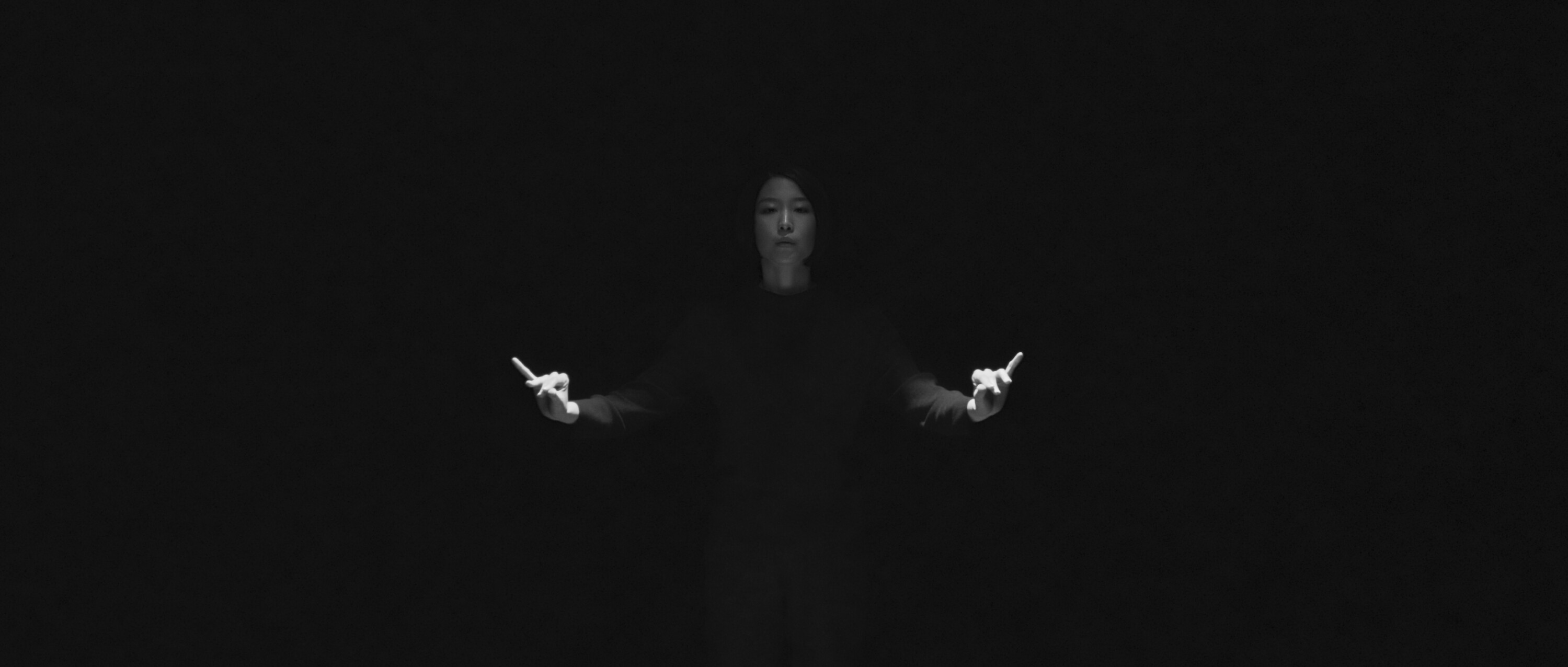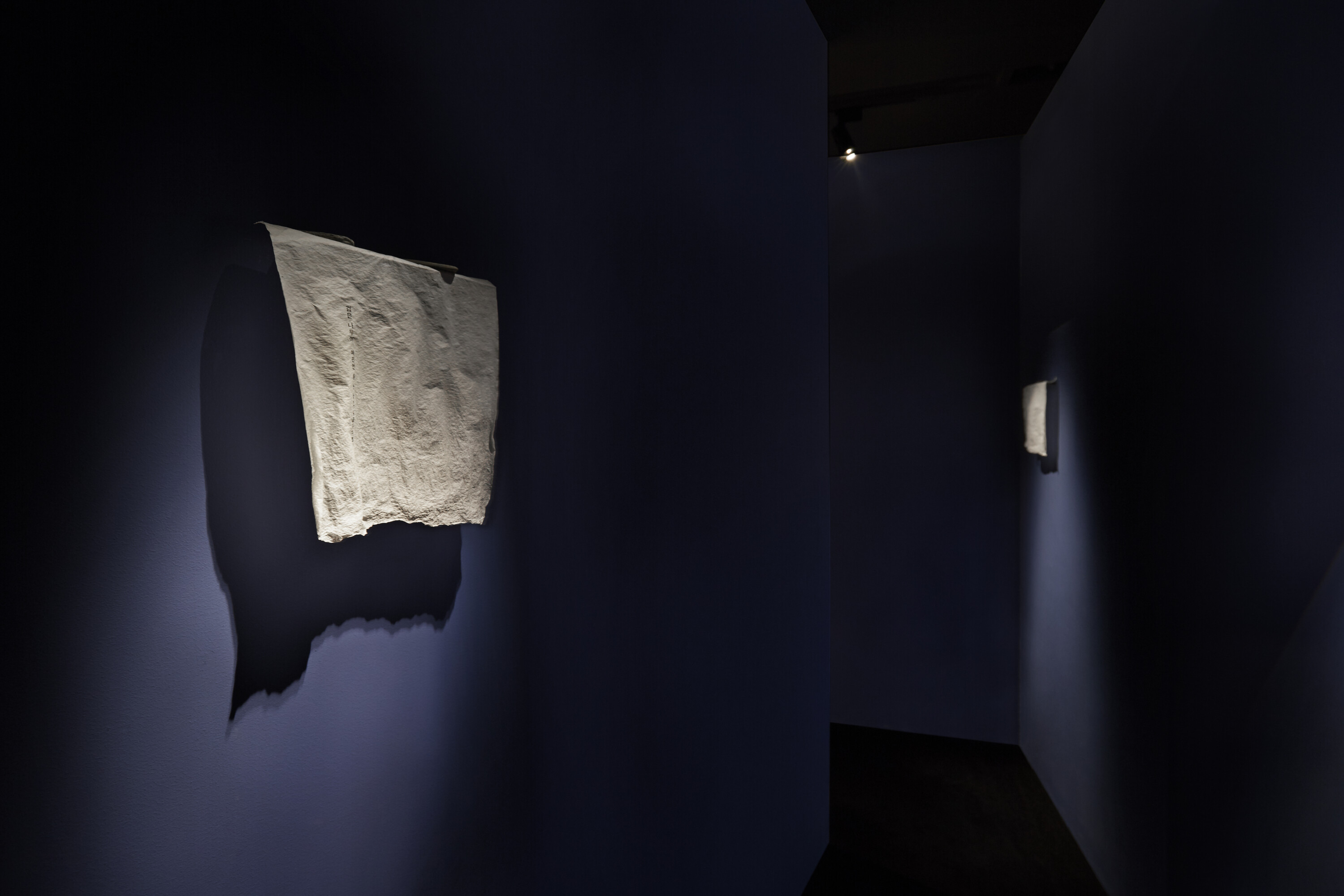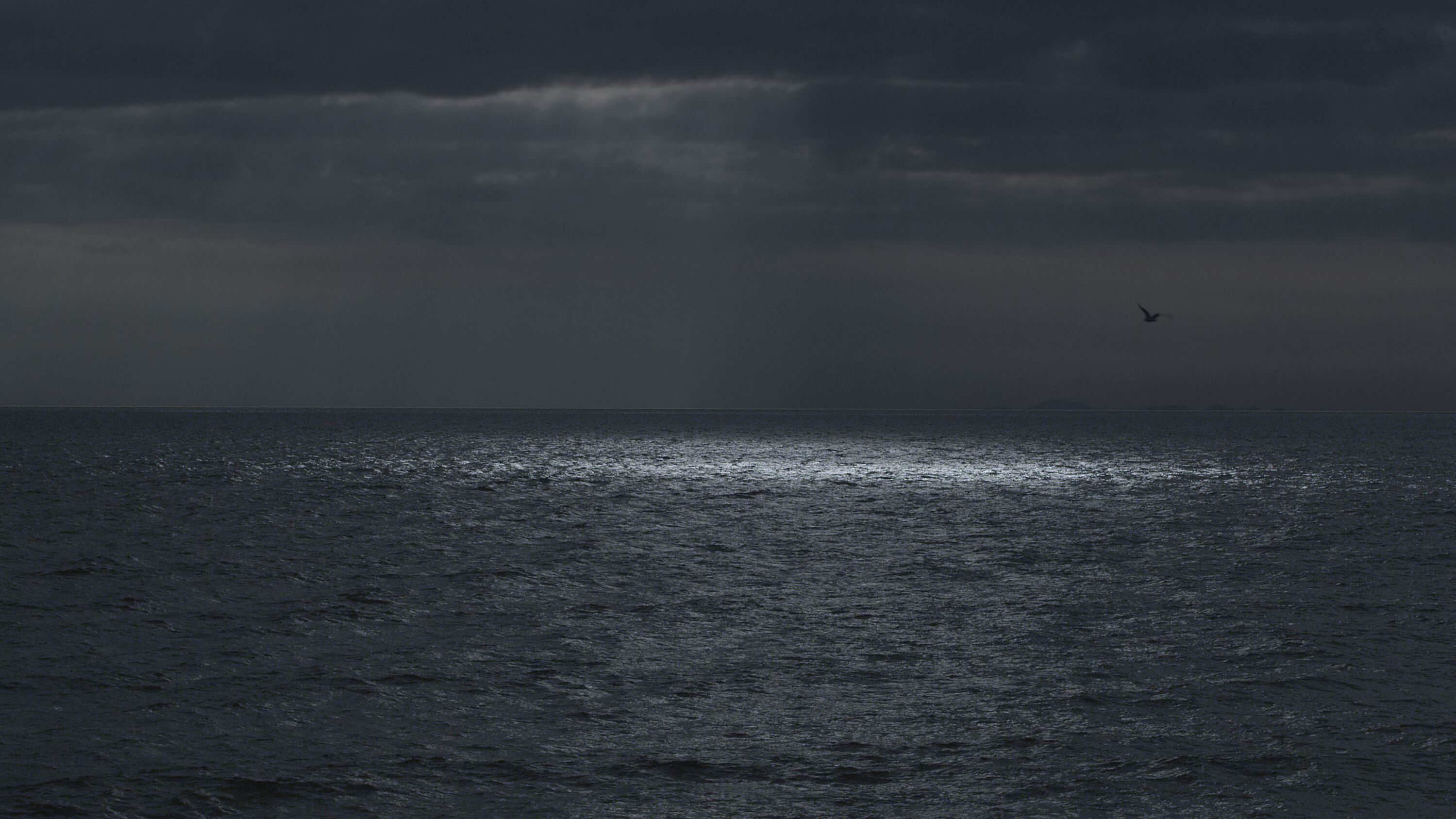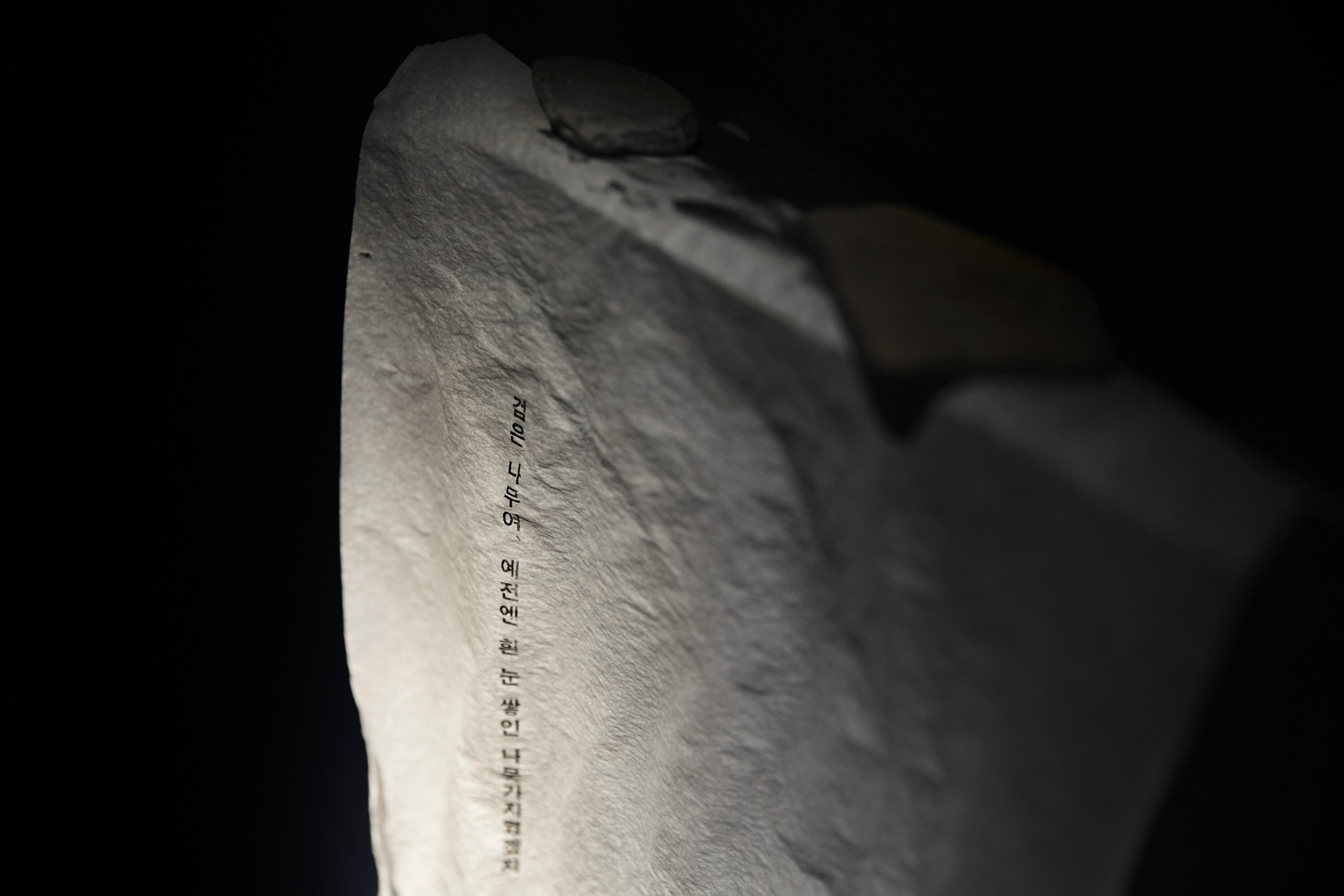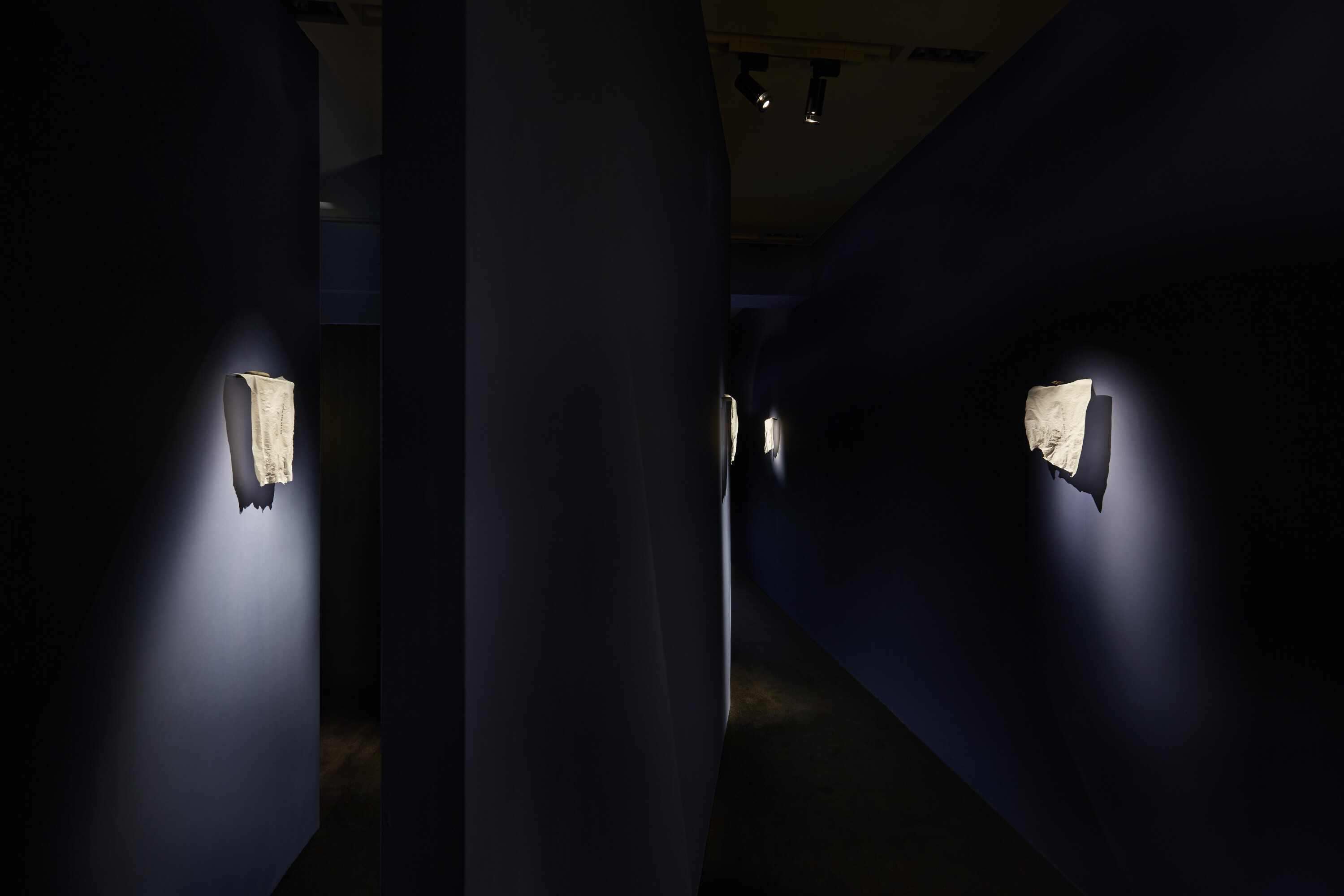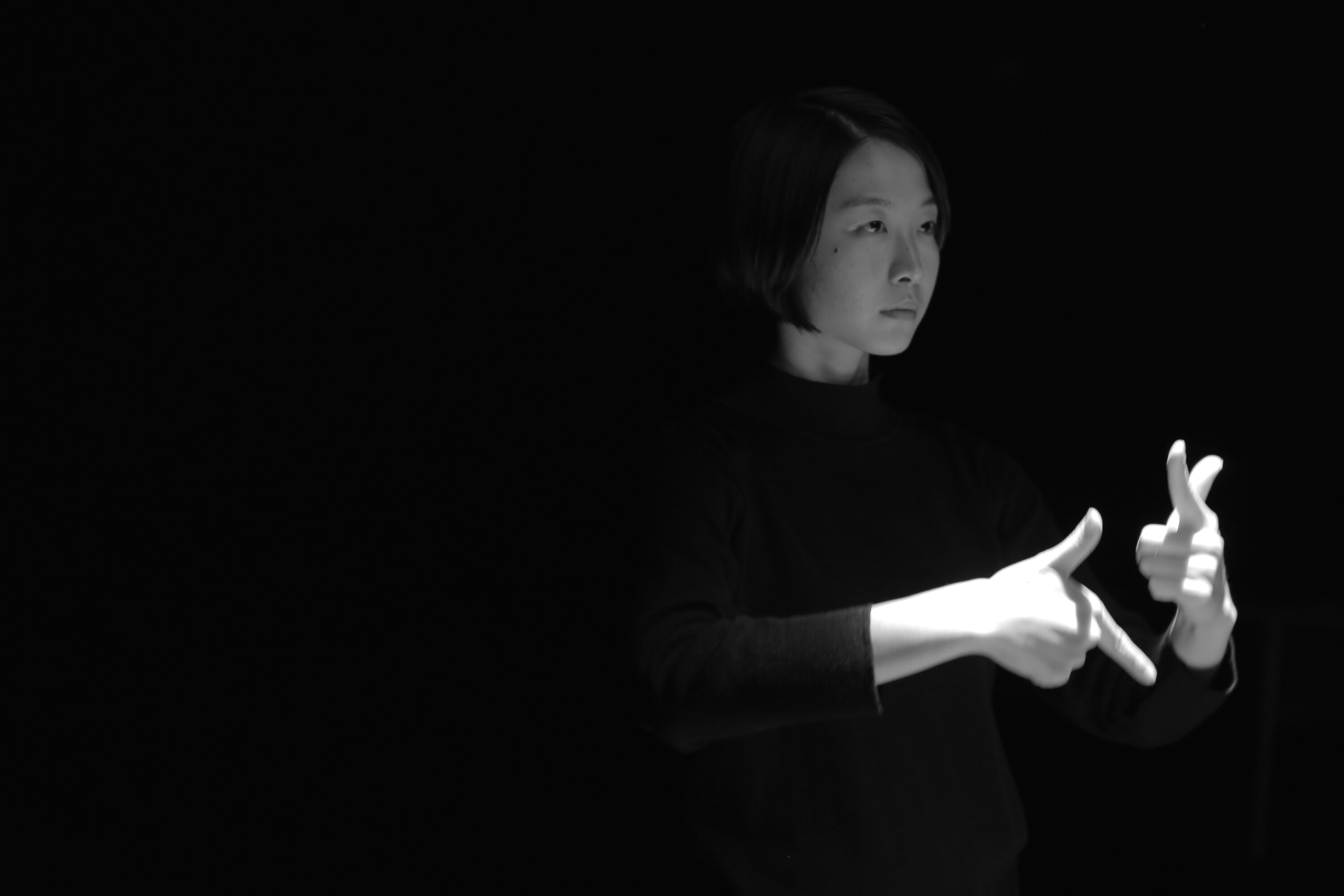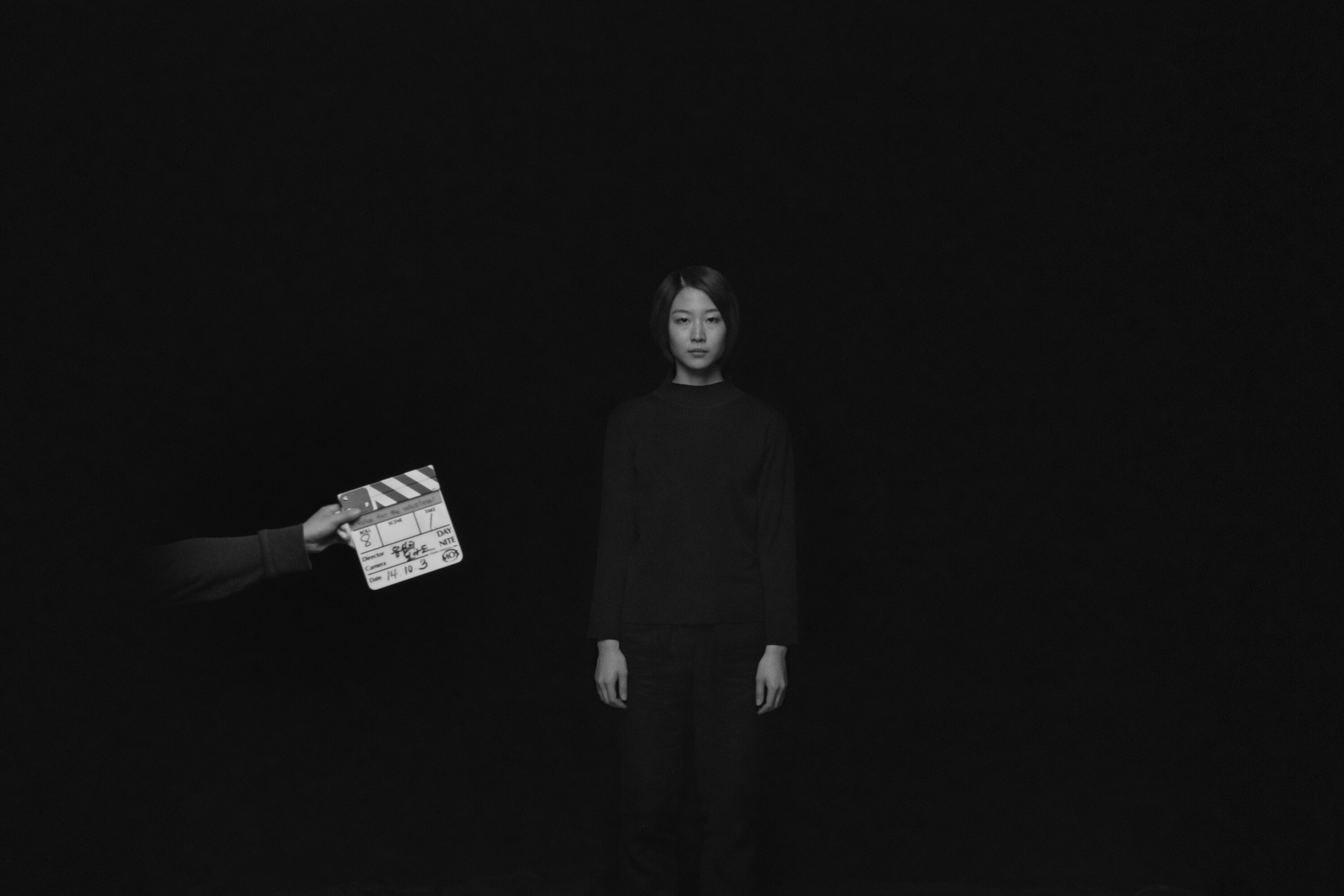voiceless
2014blackened tree, once you were a snow covered branch
白炭や燒かぬ昔の雪の枝 -Tadatomo (神野忠知, 1624~1676)
Pitch-dark, showcased at the 2015 Hermès Foundation Art Award exhibition Voiceless, is the core of the narrative along with Snow Both of Us Saw and Dry Fields. Pitch-dark is comprised of black and white film footage of performance art that expresses phrases from 6 Japanese haiku poems in sign language. Alongside the haikus, sound samples from Paengmok Harbor and music composed by Jung Jaeil are showcased. A Japanese haiku consists of 17 syllables in three phrases, in 5/7/5 respectively and enables people to read between the lines since the phrases are not closely linked together in meaning. In Pitch-dark, the text becomes an abstract gesture without any tangible characters or sounds as it connects and separates from the sounds. In this way, the voiceless words do not signify any meaning to those who do not understand sign language. The artist departs from the significance of words and instead engages the emotion of condolence and empathy.
In 2014, Korean society was rocked by the tragedy of the Sewol ferry disaster. On the 16th of April, a ferry travelling from Incheon to Jeju-do sank in the sea around Jindo and 304 of 476 passengers were determined dead or missing. This devastating event created a collective trauma among Korean people. Pitch-dark examines this scar but does not mention it explicitly. The artist’s intention in this indirect exploration is to hold that the injury can be cured, yet to remember the losses and sorrow shared by the society. Through the use of this metaphor, the subjects that are mourning are not precluded to being specific identities set in distinct space and time. In this way, the work is a requiem for anyone around the world that has had their voice taken away.
The poem that was used in the work is as follows:
Snow we saw last year, it is falling again
Cold waves, sea gulls unable to fall asleep
Gazing intently at a white autumn flower, not a speck of dust
Tears that will vanish in my hands, like hot snow
Blackened tree, once you were also a snow covered branch
Wandering dreams in a withered field
* From the phrase “Blackened tree, once you were also a snow covered branch,” blackened tree originally connotes burned ashes in Korean but ‘ashes’ could not be expressed through sign language and so it was translated as ‘blackened tree’ and made the Korean title of the piece.
타버린 숯이여, 예전엔 흰 눈 쌓인 나뭇가지였겠지
白炭や燒かぬ昔の雪の枝 -진노 타다토모(神野忠知, 1624~1676)
<검은 나무여>는 상실의 외상이 아물기를 희망하고, 망각하지 않고 뚜렷이 기억하며, 슬픔을 공감하고 애도하려는 작가의 의지이다. 이 작업은 여러 편의 하이쿠로 부터 발취한 텍스트를 그 근간으로 삼았다. 이 짧은 시들은 시공간을 초월하는 고전 특유의 힘을 지닌 차가운 애도의 조사(弔辭)로 읽히는 한편, 소리 내어 읽으면 철저한 형식미에 의해 그 자체로도 음악적인 기운을 준다. 최소한의 단어 구성으로 작가의 감정은 절제되고 읽는 사람의 감정이 여백으로 스며들어 매번 다른 경험과 더불어 마음 속에 다채로운 풍경을 펼칠 수 있는 지점이 장민승의 작업에 차용된다. 하지만 본 작업에서 텍스트는 형상화된 문자로 존재하는 것이 아니라 소리 없는(voiceless/deaf) 언어인 수화(手話)로 재현되는 과정을 거쳐 언어적인 것에서 추상적인 퍼포먼스로 전환되고, 소리(voice/blind)인 음악과 유기적으로 분리, 연결, 반복된다. <검은 나무여>는 서곡과 여섯 개의 하이쿠 발취문을 기반으로 제작된 퍼포먼스, 그리고 팽목항에서 녹음된 사운드와 표제 음악을 바탕으로 하는 약 25분의 싱글채널 흑백영상과 멀티채널 음악, 사운드로 구성되어 있다. ‘타버린 숯이여, 예전엔 흰 눈 쌓인 나무였겠지’에서 ‘숯’을 수화로 표현할 수 없어 ‘검은 나무’로 의역한 것을 다시 작업의 제목으로 불러왔다.
part I_ overture
00:05:27
part II_둘이서 보았던 눈, 올해도 그렇게 내렸을까
00:02:16
part III_파도는 차갑고, 물새도 잠들지 못하는구나
00:03:08
part IV_ 흰 가을꽃, 유심히 보아도 먼지 한 점 없어라
00:02:12
part V_손에 잡으면 사라질 눈물, 뜨거운 눈
00:02:50
part VI_검은 나무여, 예전엔 흰 눈 쌓인 나뭇가지였겠지
00:02:58
part VII_꿈은 마른 들판을 헤메고 돈다
00:03:58


